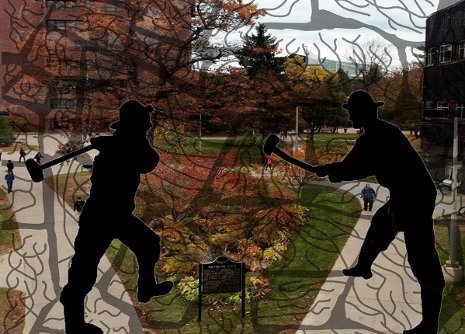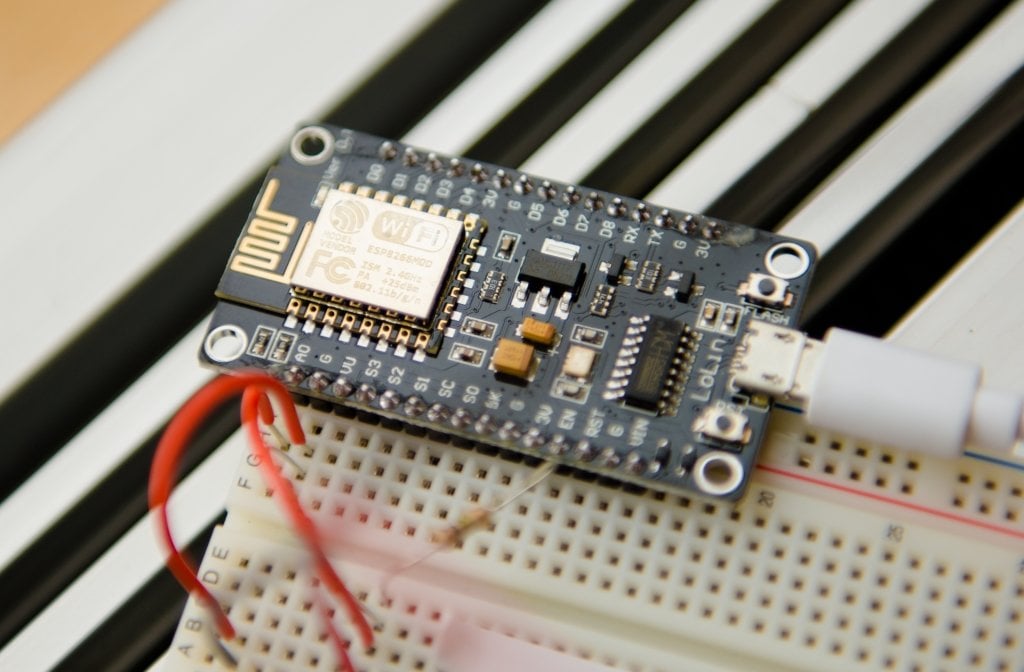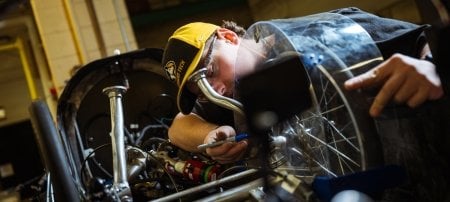Art and Science Join Hands to Prevent Bird-Window Collisions

Could images of a Husky sled dog team or archetypal Copper Country miners save the lives of birds? Michigan Tech Department of Visual and Performing Arts faculty and students think they could, if they were applied to or designed into the windows on campus.
Lisa Johnson de Gordillo, assistant professor in Visual and Performing Arts, and her 2-D and 3-D design students, have been collaborating with the School of Forest Resources and Environmental Science for the past three semesters to develop possible strategies to prevent bird-window collisions on campus.
It all began when Amber Roth, former SFRES research assistant professor, and Michigan Tech’s Wildlife Society started studying why birds were flying into windows around campus. Their efforts caught Johnson de Gordillo’s attention, and she put her design students to work on solutions.
During the 2015 fall semester, the 2-D design students developed design proposals for the skywalk between the Van Pelt and Opie Library and Rekhi Hall. With crowdfunding from Superior Ideas, the students developed prototypes. Their design prototypes, rendered on canvas and printed locally, were displayed in the skywalk in early December.
VPA Student Designs on Display in Forestry
This semester, they will be on display in the SFRES Noblet Building atrium from March 1 through April 1.
Some of the designs include a Husky sled dog team, Michigan Tech’s school song and a tribute to the area’s rich mining history.
Kitty Williams, a second-year stage and entertainment technology major, created the miners design with partner Jamie Aneshansel."The number of birds who die from crashing into windows is sobering- approximately two billion annually in America and Canada,” she said. “If Michigan Tech decides to approve this project, it will be a wonderful step towards preserving a portion of the wildlife in our beautiful area, as well as bringing more art to campus."
Ideally, Johnson de Gordillo would like the university to work with student designers to develop a design that could be applied to the school’s most troublesome windows. Designs applied in front of glass windows can break up the window’s reflection so that birds perceive (and therefore don’t strike) the glass.
Designs could be printed and applied as window stickers, turned into cut-away sculptures or etched into the glass.
“Long term, my great hope is that the university would actually use one of the student designs,” says Johnson de Gordillo. “If I dream a little further, I wonder if there are opportunities for Michigan Tech to develop a new solution or develop a new material at the forefront of technology—bringing art, science and forest resources together in a collaboration.”
Michigan Technological University is an R1 public research university founded in 1885 in Houghton, and is home to nearly 7,500 students from more than 60 countries around the world. Consistently ranked among the best universities in the country for return on investment, Michigan's flagship technological university offers more than 185 undergraduate and graduate degree programs in science and technology, engineering, computing, forestry, business, health professions, humanities, mathematics, social sciences, and the arts. The rural campus is situated just miles from Lake Superior in Michigan's Upper Peninsula, offering year-round opportunities for outdoor adventure.




Comments